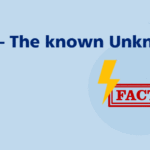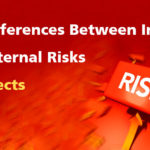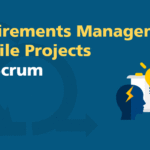In the past, the term “Risk Appetite” was only used by academics. Since the financial and sovereign debt crisis of 2008-2011, however, we have been confronted with this term on a number of occasions. But what is the difference between “Risk Appetite” and “Risk Attitude”? There is often confusion about this and they are often […]
Author Archive: RolandWanner
The EIA-748 and the 32 EVMS Criteria
If you want or need to apply Earned Value Management (EVM), you will very often be confronted with the EIA-748 standard with the the 32 EVMS Criteria. This standard has been around since 1998, but has a long history. In April 2018, ISO published its own EMV standard, ISO 21508, for the first time. In […]
How to Successfully Plan Reserves for Your Project
Projects rarely execute as planned. You will encounter impediments, risks materialize, or your assumptions don’t play out as planned. Therefore, when planning your project, you may use time or financial buffers in your schedule to compensate for potential time or cost overruns. Buffers or reserves in projects are important, but they are very often misused […]
Risks – The Known Unknowns
The Known, the Known Unknowns and the Unknown Unknowns. What does this wordplay have to do with risk management and why is it important to understand it? In this article you will learn an elementary basis of risk management, which will make risk management in your project even more successful. What Are the Known Unknowns? […]
The Differences Between Internal and External Risks in Projects
I recently read a report on internal and external project risks. The author wrote that the project team has no control over the external risks. Is that really true? An interesting aspect, where it is worth taking a closer look. In this article you will read what internal and external risks are and how you […]
Requirements Management in Agile Projects and Scrum
The requirements management for agile projects forms the basis for the project, as it is for traditional projects. With agile projects and also with Scrum the requirement management differs however in substantial points from that in traditional projects after the waterfall model. In this article, you will learn about the differences and how the requirements […]
How to Apply Contracts Effectively to Agile Projects
One of the four basic values of the Agile Manifesto is: Customer collaboration over contract negotiation. This could indicate that contracts are no longer of great importance in agile projects. Is this actually true? In order to have legal certainty and a guideline for development, contracts are also indispensable in agile projects—it’s just that they […]
How to Collaborate Successfully in Projects with the 5 Scrum Values
Values are central to our living and working together and also have a significant influence on the success of a project. In Agile Projects, values have a high importance so that project teams work together even more successfully and deliver innovative solutions in a short time. Values in working together should be taken for granted—but […]
How to Describe Risks Clearly and Unambiguously
One of the most important points in risk management is that you find the “right” risks and describe them clearly. Finding and describing risks is not that easy. But if you pay attention to some important points, your efforts will soon bear fruit. This article will help you to find the right risks and describe […]









